Table of contents
What is apple syrup? Apple syrup, often also called apple herb, is highly concentrated apple juice. Boiling or thickening for hours produces a viscous mass (like syrup) with a very sweet, intense aroma. In organic quality and partly also available raw (heated to < 43 °C).
Apple syrup - Use in the kitchen:
Apple syrup can be used in many different ways thanks to its fruity sweetness. The intense, sweet and sour taste is suitable as a sugar substitute and for seasoning and sweetening dishes: Apple syrup tastes good in muesli (muesli), in dressings (marinade, vinaigrette) for salads, in dips or sauces.
The thick, brownish apple sauce also tastes good on its own as a vegan accompaniment to cakes, omelettes, pancakes, waffles, ice cream or as a spread on bread and pastries. 1 Apple sauce is an integral part of Moutarde de Bénichon, a mustard specialty from the Swiss canton of Fribourg.
Apple syrup can also be used as an ingredient in cakes or other desserts, jam, compote, plant milk, refreshing drinks (smoothies, shakes, cocktails) or warming teas or punch. It should be noted that apple syrup is not as sweet as granulated sugar - and you need more of it to achieve the same sweetness. 2
A big advantage of apple syrup is that it is very easy to make yourself. That is why there are many apple syrup recipes circulating on the Internet. You can find our apple syrup recipe under "Your own preparation". However, please note the high fructose content (see details below) and consume this fruit sweetness in moderation.
Apple syrup substitute: Sugar alternatives such as honey, maple syrup, pear syrup or sugar beet syrup are used as apple syrup substitutes. These natural sweeteners can also be produced locally. A less regional substitute for apple syrup is rice syrup - or you can use agave syrup.
Vegan apple syrup recipe for salad dressing:
Ingredients: 3 tablespoons apple cider vinegar, 1 tablespoon apple syrup (organic), 1 tablespoon lemon juice, 3 tablespoons rapeseed oil, 1 onion, 1 bunch of parsley, salt and pepper.
Preparation: Mix the lemon juice, apple syrup and apple cider vinegar. Season with salt and pepper and mix in the oil. Then peel and dice the onion, finely chop the parsley and add both. Mix well and pour the vegan dressing over the salad.
Vegan recipe for turmeric apple drink with apple sauce:
Ingredients (for 4 people) : 60 ml apple cider vinegar, 90 ml apple syrup (apple sauce, organic), 100 ml turmeric juice, 2 tbsp lemon juice and 750 ml carbonated mineral water.
Preparation : After freezing the mineral water for about half an hour, mix all the other ingredients well and add the mineral water. Fresh apple pieces or dried apple rings (organic) are suitable as decoration.
Vegan recipes with apple syrup (organic, raw?) can be found under the note: " Recipes that have the most of this ingredient ".
| Not only vegans or vegetarians should read this: Vegans often eat unhealthily. Avoidable nutritional errors. |
Shopping - where to buy apple syrup? Apple
syrup is rarely found in major retailers such as Coop, Migros, Denner, Volg, Aldi, Lidl, Hofer, Rewe, Edeka, Spar etc., but this can vary greatly from region to region in Germany or Switzerland. Pear syrup, for example, is available in many supermarkets in Switzerland.
Drugstores, organic shops, organic supermarkets (such as Denn's Biomarkt or Alnatura), health food stores, specialty stores or online retailers usually offer apple syrup or thick juice, often in organic quality (organic). If you pay attention to organic quality when buying apple syrup, you can be sure that it does not contain any artificial additives. You should also prefer regional products. Apple syrup can also be found in raw food quality (raw), provided that the temperatures remain below 43 °C when thickening the juice. 3
Your own preparation - how to make apple syrup yourself?
Making apple syrup (making apple syrup yourself): It is very easy and anyone can make apple syrup from apple juice. You either need ready-made apple juice - or you can make it yourself from raw apples, e.g. with a household juicer. For 250 ml of apple syrup you need about 2 liters of apple juice. For the apple syrup recipe you boil the natural, cloudy and unpasteurized juice in a pot for 3-4 hours at a low heat. The long cooking time allows the fruit juice to thicken and it takes on a darker, brownish color. Now pour the reduced syrup through a sieve or cotton cloth and pour it into a suitable glass (bottle).
Apart from apples, other fruits and fruit juices can also be thickened to make syrup or molasses. If you boil the fruit yourself, the end result would no longer be considered raw food (raw) due to the cooking temperature.
Storage:
If well sealed and filled into a sterile container, homemade apple syrup will last for around a year. If it is hermetically sealed, it can be stored in a dry, dark and cool place. After opening, store the apple syrup in the refrigerator and use it within 6 months. 2 Industrially manufactured products have a shelf life of several years when sealed.
Ingredients - Nutritional values - Calories:
Apple syrup is characterized by a high proportion of carbohydrates. At 78 g/100g, these would cover 28.9% of the daily requirement, but apple syrup is used much more sparingly. The juice has 375 kcal per 100 g, which is similar to the calorie content of granulated sugar (387 kcal/100g).
Due to the composition of the ingredients in our table, the information is in the range of a raw food variant. However, the heat-sensitive ingredients can also be added later.
The vitamin C (ascorbic acid) content (52 mg/100g) is comparable to that of orange juice (50 mg/100g). Sea buckthorn berries, for example, contain a lot of vitamin C (450 mg/100g) or yellow bell peppers (184 mg/100g). Honey only contains 0.5 mg of vitamin C (per 100 g). 4 Vitamin C is found in many natural foods, which is why the daily requirement is easy to achieve with a healthy and varied diet. Vitamin C has an antioxidant effect and plays an important role in the formation of collagen, which is found in bones, cartilage and connective tissue. It is also said to promote iron absorption and inhibit the formation of carcinogenic nitrosamines. 5
Also worth mentioning is the relatively high proportion of biotin (vitamin B7) - 28 µg/100g - as well as other vitamins such as vitamin K (42 µg/100g) and vitamin B6 (0.6 mg/100g). 4 Biotin is involved in metabolic processes and promotes the formation of new hair roots and nail beds. 6 Vitamin K plays a role in blood clotting and bone metabolism 7 and vitamin B6 also contributes to metabolic processes, nerve function and the immune system. 8
Potassium is present at 735 mg/100g. Dried plums, for example, have comparable values. More can be found in banana powder (1,491 mg/100g) and practically none in corn syrup. 4
The complete ingredients of apple syrup, the coverage of the daily requirement and comparison values with other ingredients can be found in our nutrient tables. In the article Nutrients explained you will get a detailed insight into the topic.
Health aspects - effects:
Is apple syrup healthy? / Is apple syrup healthy? There is no evidence of any particularly positive health effects from apple syrup. Apart from being an alternative sweetener to household sugar, it has hardly any advantages. The glycemic index of apple syrup is 40, which is slightly lower than the GI of household sugar, which is around 59. According to the WHO, sugar from fruit juice concentrate is a "free sugar" and is no healthier than beet sugar. 14 Although apple syrup contains more vitamins and minerals (than sugar, for example), the syrup contains much more sugar than an apple and is therefore not a good substitute for fresh fruit. 9
Organic manufacturers of baby food, especially tomato sauces for children, 9 have come under criticism for selling heavily sweetened products (including apple syrup). Do not be misled by slogans such as "with natural apple sweetness" and check the total sugar content when buying such products.
Dangers - Intolerances - Side effects:
Apple syrup contains 60% fructose. For people with fructose intolerance, apple syrup is therefore not suitable as a sweetener. If consumed in excess, even people without intolerance can experience diarrhea or even mild heart palpitations. 2
In terms of the risk of tooth decay, apple syrup is just as harmful to teeth as table sugar or sugar alternatives such as maple syrup, honey, beet syrup, agave syrup, etc. 10
Diabetics also need to be careful with the sweetness of apple syrup, as fructose is not a recommended alternative for diabetics.
Occurrence - Origin:
Apple cultivation is considered the basis for the production of apple syrup. The preservation method of 'boiling' has a long tradition in the Rhineland and was originally developed as a part-time agricultural activity in so-called cabbage presses or cabbage kitchens. 12 Even today, cabbage, i.e. the boiled-down syrup of apple, pear and sugar beet juice, is considered a Rhenish speciality. 11 The juice is also of particular importance in the Dutch province of Limburg, 1 as well as in the USA (especially in New England and further west).
Possibility of confusion:
In German-speaking countries, the term Apfelkraut is also used for cooked sauerkraut or red cabbage (blue cabbage) with apples. In addition, German chamomile is also popularly known as Apfelkraut. 12
Industrial production of apple syrup:
Until the second half of the 20th century, apple syrup made from apple juice was not an industrially manufactured product. 11 Nowadays, apple syrup is also produced in large quantities.
Making apple syrup: The juice is pressed out of the apples using machines, sometimes pears are also mixed in. This juice is boiled until a viscous mass is formed. In some regions, the pieces of fruit are also steamed or boiled (without squeezing out the juice). 12 After the reduction process, the thickened syrup is pressed through a sieve to remove residues. The resulting apple syrup is then filled into sterile jars or bottles and sold in an airtight container. 2
In some cases, sugar or pectin is added to the juice, as the latter helps the product to gel. 17 Due to the high sugar content, apple syrup has a relatively long shelf life. 1 According to the Federal Ministry of Food and Agriculture ( BMEL) Producers are only allowed to add a limited amount of sugar to the apple syrup.
General information:
According to the BMEL, there are certain guidelines for selling a product as apple herb: 1 kilogram of apple herb must contain at least 2.7 kg of apples (or pears), of which at least 2.1 kg must be apples, and a maximum of 400 g of sugars may be used. If the product does not meet these requirements (e.g. if it contains more pears or sugars), it must be labelled differently. 13 pears were originally added to the herb to increase the sugar content and also because pears have a shorter shelf life and therefore usually had to be used up quickly.
In German-speaking countries, apple syrup is officially classified neither as a sweetener nor as a sugar substitute. 16 However, apple syrup is sometimes referred to as a natural sweetener (or alternative sweetener 9). Otherwise, the product is classified as a natural sugar alternative or as a fruit syrup or fruit product. 13 In the English-language specialist literature, however, apple syrup or apple juice concentrate is considered a sweetener. 15
Alternative names for apple syrup:
Apple syrup is also known as apple herb, apple beet herb, apple syrup or apple sweetness (apple sweetness), mainly due to its consistency. An incorrect spelling is apple thick juice. In the Netherlands, apple syrup is known as Appel Stroop. In French-speaking Switzerland (in the canton of Vaud), apple sweetness is called vin cuit, but in France this term refers to a wine-like drink (vin cuit = cooked wine).
In English, it is called apple juice concentrate or apple syrup, while in some regions of the USA the product is known as apple butter. In German-speaking countries, the American name has been partially adopted, which is why you can find recipes by searching for things like "Make your own apple butter?" In the USA, the terms apple cider syrup, cider syrup (= boiled cider) and apple molasses are also used for apple syrup made from apple juice (all without alcohol). 18
Literature - Sources:
Bibliography - 18 Sources
| 1. | Biologie-seite.de Apfelkraut. |
| 2. | Krankenkassenzentrale.de Apfeldicksaft. |
| 3. | Mrvegan.ch Apfeldicksaft in Rohkostqualität Bio. |
| 4. | USDA United States Department of Agriculture. |
| 5. | Verbraucherzentrale.de Vitamin C - erstaunlich gesund? |
| 6. | Verbraucherzentrale.de Sorgt Biotin für gesunde Haut, glänzende Haare und feste Nägel? |
| 7. | Pharmazeutische-zeitung.de Vitamin K und seine Funktionen im Körper. |
| 8. | Apotheken-umschau.de Vitamin B6 (Pyridoxin). |
| 9. | Foodwatch.org Apfeldicksaft - gesünder als Zucker? |
| 10. | Staudte H, Glockmann E. Vermeidung von Zahnhartsubstanzschäden durch eine zahngesunde Ernährung. Wissen Kompakt 6.4 (2012): 15-26. |
| 11. | Fröhlich M, Sosinka M. Transnationale Nahrungsforschung: Apfelkraut und Obstanbau in der Euregio Maas-Rhein. KulTour. Kulturanthropologie / Volkskunde der Universität Bonn. 2011. |
| 12. | Lebensmittellexikon.de Apfelkraut, Apfel-Rübenkraut, Apfelsirup. |
| 13. | BMEL Bundesministerium für Ernährung und Landwirtschaft. Leitsätze für Obsterzeugnisse. 2008. |
| 14. | WHO World Health Organization. Guideline: Sugars intake for adults and children. Geneva. 2015. |
| 15. | Varzakas Th, Labropoulos A, Anestis S. Sweeteners. Nutritional Aspects, Applications, and Production Technology. CRC Press. 2016. |
| 16. | bfr.bund.de Bundesinstitut für Risikobewertung. Bewertung von Süssstoffen und Zuckeraustauschstoffen. Hintergrundinformation Nr. 025/2014 des BfR vom 1. Juli 2014. |
| 17. | patents.google.com Patent US2736655A. Process for making apple syrup. |
| 18. | ediblecommunities.com edible NUTMEG. Steele De Pecol D. Boiled Cider History Preserved at Averill Farm. 1. Sept. 2016. |
- Samantha Rehm
- Anna Kolber, Dipl. Ing.

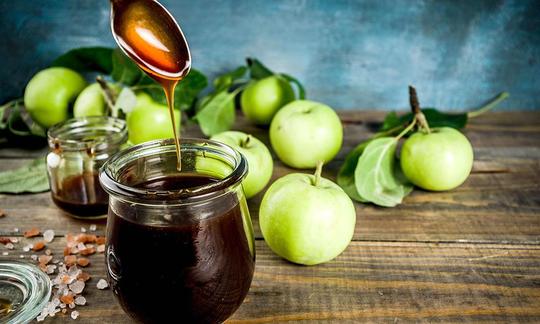

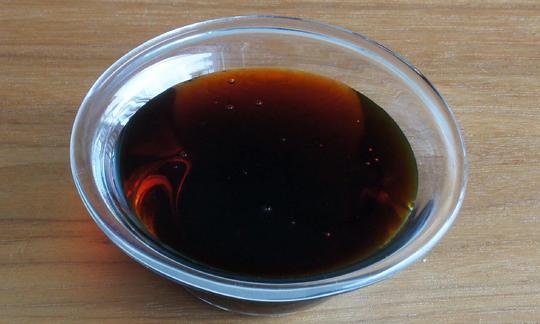

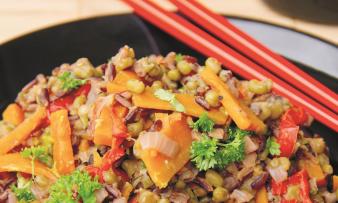
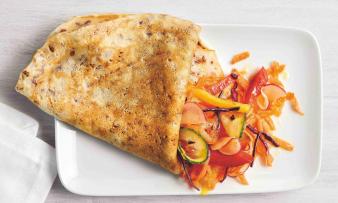
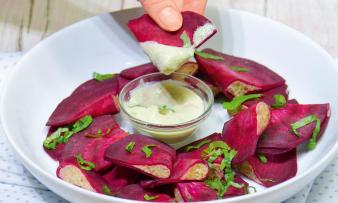


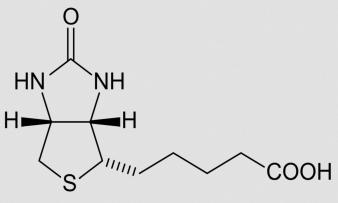


Comments